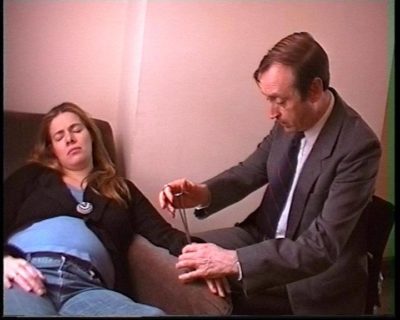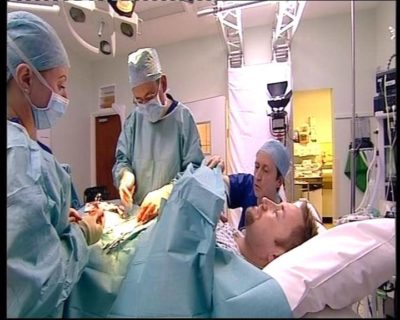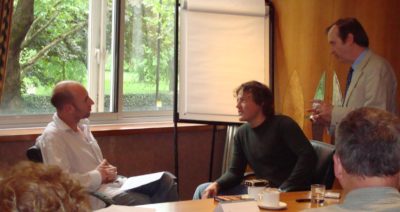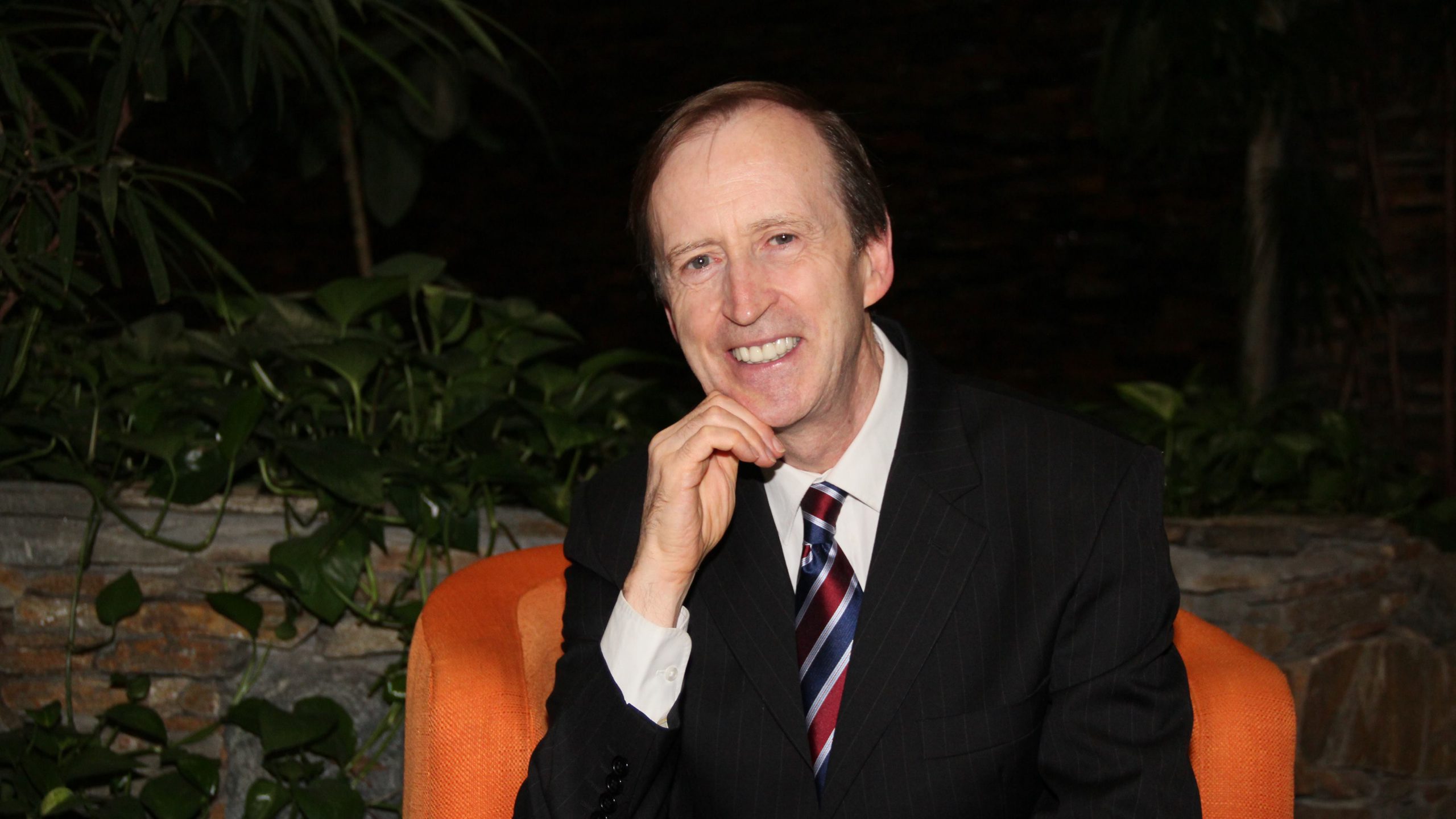Hypnotherapy is a field that attracts millions and at the same time scares the masses because of its myths. People imagine hypnosis as an unknown territory where they don’t have any control, being transformed into some kind of zombies, as it’s often shown on TV. Fortunately I had the chance to meet one of the greatest hypnotherapists in the world, Dr. John Butler, with over 35 years of proven experience. He teaches his students to use hypnotherapy for many benefits for themselves and to greatly improve the lives of their clients.
Dr. John, what is your field of expertise?
My field of expertise is the human mind, particularly the many levels which we are only dimly or partially aware of most of the time, which are collectively called the subconscious mind. The fact that there is so much going on in our own minds, at levels where we are not fully aware, is the cause of many problems. In my experience, the most powerful and effective way of dealing with these problems is hypnotherapy, so this is my principal focus.
What does hypnotherapy mean?
Hypnotherapy means using the natural mental ability of hypnotic trance and hypnotic procedures for helping in therapeutic purposes. While historically, many traditional and indigenous societies have used trance methods for social, medical and spiritual purposes, it is in the last two centuries in the West that hypnotherapy has become a highly sophisticated and effective therapeutic method with increasing evidence for its value.
What are the most common myths about hypnosis?
In my experience, number 1 is that the hypnotist will control the person being hypnotised – this is not true. The hypnotist is a guide who works in partnership with the client, who willingly agrees to enter hypnosis. The trance takes place within the client’s mind, and no-one but the client can do it. Clients can accept or reject hypnosis and suggestions, and people vary in the speed and manner with which they will go into hypnosis, some are eager to go along with the hypnotist’s guidance, others take a little longer. It is part of the hypnotist’s job to adapt and give the best method for the particular client. Myth number 2 is that you will be unaware of what goes on in the trance and will not remember what happens in hypnosis, this is not true. Almost everyone is aware of the full process, and can remember. This is beneficial for the therapeutic effect.
How can hypnotherapy help?
The hypnotic trance in itself is very beneficial as a deep relaxation and a mental relief from stressors. This is known as neutral trance, deep relaxation alone with no other input from the hypnotist. In addition, hypnotherapy is a very powerful method for changing limiting and negative beliefs at a subconscious level, and so changing the limiting and negative behaviours that come from those beliefs. An example might be, that consciously a person has the goal of being healthy and fit, but subconsciously they feel they are not good or worthy, which results in their feeling unhappy and eating many calories to comfort themselves. So hypnotherapy would be used to program them with beliefs that they are worthy and can give themselves good and healthy things. The methods that I use are primarily: hypnotic trance; hypnotic programming, which is presenting new ideas in ways which the emotional levels of the mind can relate to and absorb; and integrative work, which is working on inner conflicts, often relating to core beliefs and values about life and oneself. A technique known as age regression is sometimes used in hypnotic integration, the purpose of the regression method is to gain perspective, to see how beliefs were put together in the past on limited or partial information. An example might be, being given the idea by a critical parent, or bullies at school, that we are not good or worthy, and to see and feel at an emotional level, that this is not true and these people said these things due to their own issues. This helps with the absorption of new, positive ideas.
What are the most common conditions to be treated with hypnosis?
In my experience – lack of confidence, trouble with sleeping, fears of travelling in planes or other methods, difficulties with relationships, irrational fears such as of spiders etc, behaviour changes relating to performance at work, and health and fitness, including weight control and quitting smoking. In addition, I have a long involvement in using hypnotherapy for pain control and support during medical, surgical and dental treatments, so I have many clients coming for that.
 What are the greatest benefits through hypnotherapy sessions?
What are the greatest benefits through hypnotherapy sessions?
In my opinion, the greatest benefit is the client discovering how to work actively with the power of the emotional, imaginative levels of their mind, rather than having these be mysterious parts of themselves that often work against their conscious goals.
Why is society skeptical about this domain?
In my opinion, largely through lack of correct information. I often find people raising arguments with me, about ideas on hypnosis that I do not hold. For example, when I mention that using hypnosis, you can achieve a high degree of control over the sensation of pain, often people will bring out examples of people who have managed to endure pain without being hypnotised and use this to say that the hypnosis was having no effect, the person was doing it themselves. This idea is based on the myth that hypnosis is some kind of artificial state created in the person by the hypnotist. This is not true. Hypnotic trance is a natural state, and people often access it spontaneously, particularly in emergencies, when they are highly motivated. The work of the hypnotist is to guide and demonstrate to the person, that they have this ability and they can use it to help themselves in this way.
What is the difference between traditional therapy and hypnotherapy?
I would question the meaning of the word “traditional” here! Historically, hypnotherapy (initially under the name of mesmerism) is the first and original Western tradition of secular psychological therapy, starting in the late 18th century and benefiting from over two centuries of contributions from outstanding workers in the field. It is well-known that analytical therapy, for instance, grew directly out of hypnotic methods, and hypnotherapy has continued to develop since then. A client attending a hypnotherapy session, who has previously had therapy that did not involve hypnosis, will find some things in common. The hypnotherapist asks them for their goals, and for information about themselves which they believe is relevant to achieving these goals, so the first part of the sessions go in information transfer, and feedback, to clarify and focus what the therapeutic task of the session is. Depending on the complexity of the client’s situation, this can be a longer or a shorter time. My sessions with clients usually last for about 90 minutes, so we can fit in the additional elements that are in the hypnotherapy session. I use hypnotic exercises to test for the best methods of trance induction for this client, and then go into the induction. We have already, through our discussion, begun developing a shared focus of attention on the goals they have, and this rapport is very much increased by their willing participation in the hypnotic induction. Clients often say to me, “Just at the point where a therapy session would end or get stuck, you start up hypnosis and we get moving!” This is not to say that therapy that does not use hypnosis has no value – I have had very interesting discussions with therapists who tell me that the important forward movements that happen in therapeutic work often come from times of intense rapport in a session, or from a build-up of focus for the client where they have a deep-level, effective change of perception. In hypnotherapy, we use this proactively and from the outset we seek to create this state of mind, so when you have a client who is motivated and willing to open up the subconscious levels, then the great and rich repertoire of hypnotherapy is there for them. I should also point out that in the present times, there are a great many therapeutic methods that often go by acronyms, so that one name for this field is “alphabet soup”. In my opinion, many of these are drawn from the repertoire of hypnotherapy, and the methods can be found embedded in the teachings and case work of the great hypnotherapy contributors. This is not to say they have no value, however it does go some way to explain how there is an ever-increasing number of them, as hypnotherapy is a very big umbrella.
In which way can hypnotherapy change people’s lives?
In my opinion, it is primarily by developing belief in one’s creativity, ability to develop oneself, through gaining access to the emotional, imaginative levels of the mind.
How would hypnotherapy fit in the context of medicine?
Medical practice today is largely based on physical and chemical interventions to the human body – it is very tightly controlled as a system because of the hazardous nature of the interventions it uses, and generally it takes working with a dedicated individual from within the system, to work out how to fit hypnosis into any particular procedure, to benefit patients. A well-known example occurred with Dr. Marie-Elisabeth Faymonville in Liege, Belgium, who has developed a method of fitting hypnosis into the surgical systems there, known as hypnosedation, which has benefited many patients. I have helped people working in treatment systems to do similar work, and I hope this will continue.
Can you tell us about the operation that you had without any anaesthesia? 
I had been practising for many years with self-hypnosis, and had already used it for pain control when recovering from some injuries. I was fortunate to have a surgeon who had worked before with hypnosis, when I had hypnotised a patient of his for hypnoanalgesia during hernia repair, so he was willing for me to do it. I turned up at the hospital, lay down on the trolley, hypnotised myself, and kept up the self-hypnosis suggestions while I could feel the surgeon working, which was just sensations, not pain. The anaesthetist monitored the instruments, but they did not register any stress so he didn’t intervene – it is important to have an anaesthetist there as the aim is for the hypnosis to do what is possible in that case for that patient, which is not something known certainly in advance – hypnoanalgesia is not some sort of demonstration or test enforced on the body, it is essential to cooperate harmoniously with the subconscious and with any medical interventions that are required. I knew it would go well, and as it turned out, I did not need any chemical intervention. I also recovered very rapidly and very well, and did not need to take any pain control medication post-operatively.
Would it work on people in general?
In my opinion, anyone will benefit very much from having their emotions and imagination working for them supportively, for a medical, surgical or dental procedure. I’ve had clients turn up only a short while before a procedure, very motivated because of the closeness of the date, and achieve hypnoanalgesia in that time, sufficient to have surgery with no chemical analgesia or sedation. I’ve also had clients who use hypnosis to prepare calmly for a surgery, where they have local or general anaesthesia, in these cases it often happens that a lesser amount of chemical anaesthetic than usual is needed. It is also very helpful to use hypnosis after a procedure, to remain positive and support recovery. If it is not possible for the hypnotist to come to the procedure, often a recording will be helpful, I’ve even hypnotised patients by telephone, as they are going into surgery or undergoing a procedure. I’ve had many clients use it in similar ways for childbirth.
In which way is the mind our most powerful tool for healing and transformation?
It’s the one that’s with you 24/7 and it’s always active, even when you’re asleep. So getting your emotions and imagination to work for you, rather than against you, means that you are truly working within yourself as a team and all your resources are going towards your goals.
Do you teach for those who want to be professionals in the area or for those who just want to learn about this field?
I teach a training program that takes students from the beginning to being able to practise as a hypnotherapist. In addition, we often have students who are already hypnotherapy practitioners, who come to one or more courses to add to their skills. People who just want to learn about this field are welcome to attend for their own interest – sometimes they become so interested, they start practising!
Where do you hold your courses?
I run a complete training program every year in London, UK. In addition, I have been privileged to be invited by people in other countries to teach a complete or partial training program there. This year, I plan to teach in Germany, USA and Hungary. I’ve also received other invitations to teach, which I hope I will be able to fit in soon.
Are the certificates accredited?
In addition to students taking the class training program and completing the personal study requirements, we also have an assessment process for accreditation, and when this is passed we award a Diploma. Here in the UK, our graduates are fully eligible to practise and our program is accredited by the American Council of Hypnotist Examiners, an organisation with an international membership which has among the highest standards in the world in this field. Accreditation processes vary in different countries, and we advise students to check the regulations in the country where they wish to practise.
 How long does a course take and how many courses are there for a complete training?
How long does a course take and how many courses are there for a complete training?
Live classroom teaching is vitally important, in my opinion, because hypnotherapy is a live, interactive process, so it is essential for students to experience demonstrations and interactions in class. Our courses are intensive, each one is 6 full days together, Monday to Saturday, so students are immersed in the process and their skills can become established. Each course has a small enough number of students to allow for supervised practical exercises with individual feedback and attention, and all teaching is done by expert practitioners – the great majority of it, I do myself personally. There are four courses in total, giving 200 hours of face to face classroom tuition. Our training program incorporates the full range of hypnotherapy. Our course Hypnotherapy Skills for Life Change teaches a wide range of methods of hypnotic testing, trance induction, self-hypnosis training, and programming for behaviour change and performance enhancement, overcoming limiting and negative self-beliefs; our course Clinical Hypnotherapy teaches hypnotherapy for deep inner conflict resolution and personal development, often a core element in overcoming relationship difficulties. Our course Advanced Analytical Hypnotherapy teaches hypnotherapy for life crisis and core values review and renewal, which are often related to feelings of loss of meaning and hope in life; and our course Medical Hypnotherapy teaches hypnotherapy for pain control and mental and emotional support, during medical, surgical and dental treatments, as well as promoting physical well-being. In addition, we provide study materials and recommended reading for personal study.
Where can you be reached?
I’m based in London, UK, and can be reached on +44 20 7385 1166 and john@drjohnbutler.com and www.hypnotherapytraininginternational.com.
What would be your personal advice for the world?
Give yourself 15-20 minutes of hypnosis trance and programming at least once a day, even if it’s just neutral trance – go to a skilled practitioner, or learn real self-hypnosis – and see what happens when you persist. It is, in my opinion, the easiest AND by far the most effective way to change yourself from the inside out, for the better.












